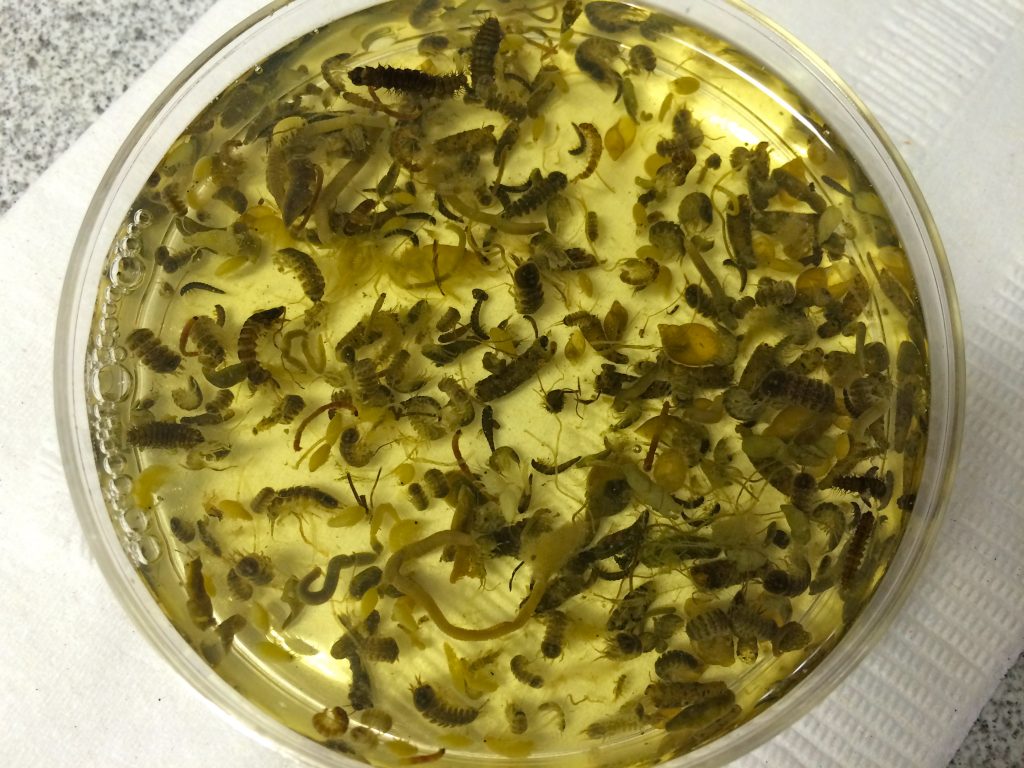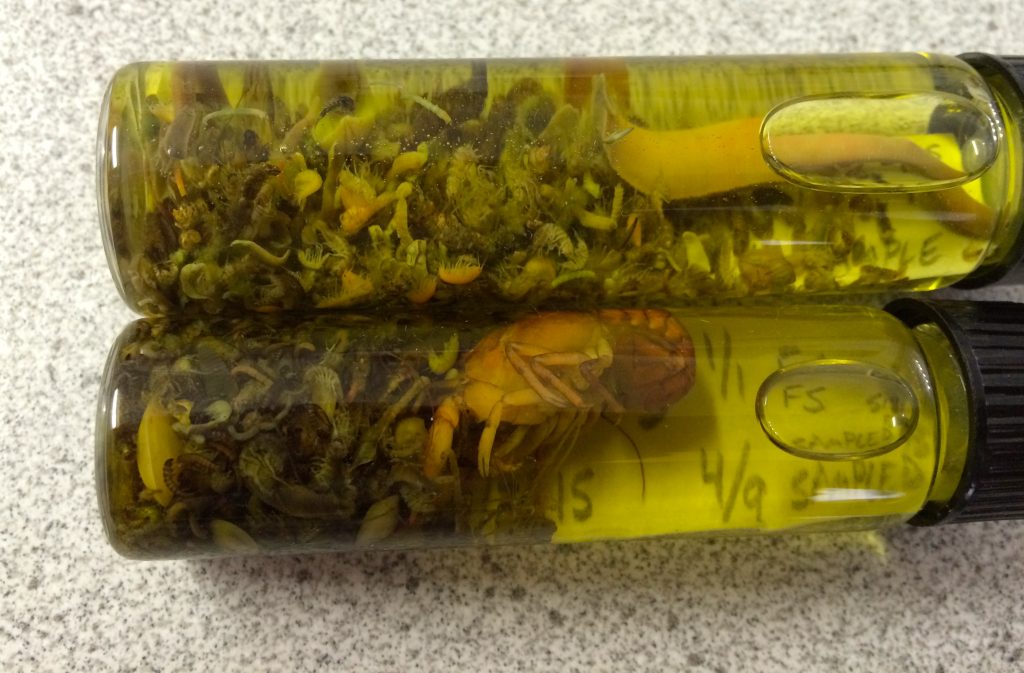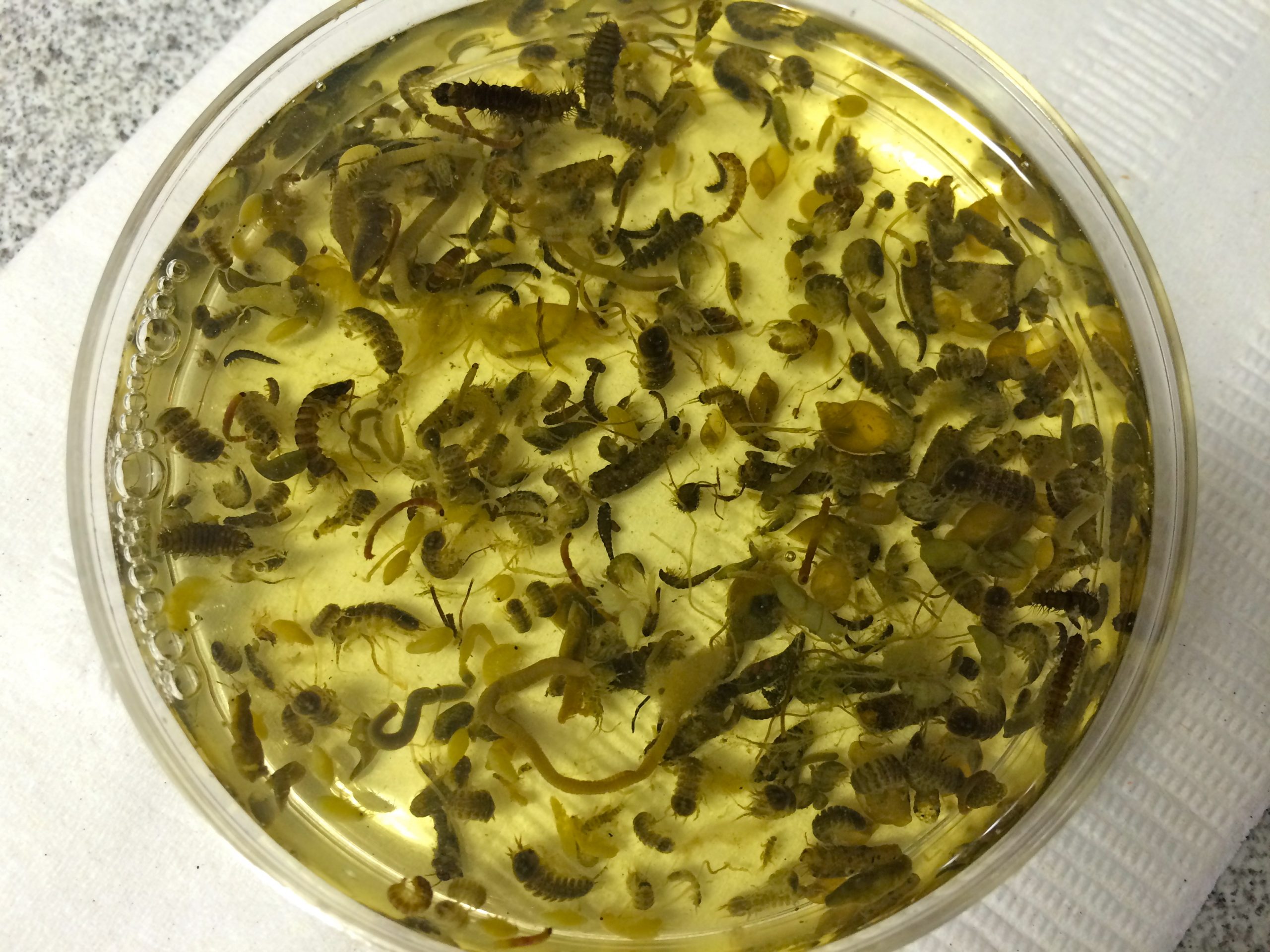[vc_row full_width=””][vc_column][vc_column_text css_animation=””]Over the last couple weeks, I’ve had the privilege of aiding David Stagliano with the fall invertebrate sampling of the Missouri River. The Upper Missouri River Watershed Alliance (UMOWA) initiated this sampling in order to establish a baseline data set that will allow us to see how the river changes over time. It will also serve as a health indicator of the river. As far as fishermen/women are concerned, knowing what bugs are in the river helps us figure out what flies to use.[/vc_column_text][/vc_column][/vc_row][vc_row full_width=””][vc_column width=”1/2″][vc_column_text] [/vc_column_text][/vc_column][vc_column width=”1/2″][vc_column_text css_animation=””]The picture to the left shows a typical sample taken from the upper river. This particular sample was taken just upstream of the Little Prickly Pear confluence. In the sample you see sowbugs, caddis larvae, snails, worms, scuds, midge larvae, and a few mayfly nymphs. This matches pretty well with the flies that are working well on the upper river – sowbugs/Rays, weight flies/Czechs, San Juans, the Zebra family, and PTs of all shapes and sizes.[/vc_column_text][/vc_column][/vc_row][vc_row full_width=””][vc_column width=”1/2″][vc_column_text]The following are some interesting anecdotal pieces of info that I’ve noticed from the fall sampling that may be interesting to fly anglers.
[/vc_column_text][/vc_column][vc_column width=”1/2″][vc_column_text css_animation=””]The picture to the left shows a typical sample taken from the upper river. This particular sample was taken just upstream of the Little Prickly Pear confluence. In the sample you see sowbugs, caddis larvae, snails, worms, scuds, midge larvae, and a few mayfly nymphs. This matches pretty well with the flies that are working well on the upper river – sowbugs/Rays, weight flies/Czechs, San Juans, the Zebra family, and PTs of all shapes and sizes.[/vc_column_text][/vc_column][/vc_row][vc_row full_width=””][vc_column width=”1/2″][vc_column_text]The following are some interesting anecdotal pieces of info that I’ve noticed from the fall sampling that may be interesting to fly anglers.
- Bug density (bugs per square meter of bottom) is greatest on the upper river and decreases as you move downstream.
- Bug diversity (the number of different bugs at each site) increases as you move further downstream.
- Lots of sowbugs. Everywhere.
- Lots of scuds and midges too.
- Scuds vary dramatically in size. You see everything from size 20s up to size 8s.
- Midges aren’t just black. There are lots of white and red ones too.
- There are a bunch of aquatic worms living in the river. Your San Juans aren’t just imitating drowned earthworms. Similar looking worms live in the riverbed and are there all the time.
- There are a bunch of cased and free living caddis larvae in the river right now.
[/vc_column_text][/vc_column][vc_column width=”1/2″][vc_column_text css_animation=””]

[/vc_column_text][/vc_column][/vc_row][vc_row][vc_column][vc_column_text]Sampling for the year is done now, but will restart in the spring. Samples are taken in the spring, summer, and fall. As more data accumulates UMOWA will be able to track changes in the invertebrate life of the river to help inform management decisions as well as flyfishers.[/vc_column_text][/vc_column][/vc_row]

Awesome work Braden!
COOL POST!!
Wonderful, your contribution to the cause is greatly appreciated, thank you for your time and dedication!
sworn off all things non-fishing for the year.. I guess using cell phones is included in that? I like the post Braden! Catch up soon!